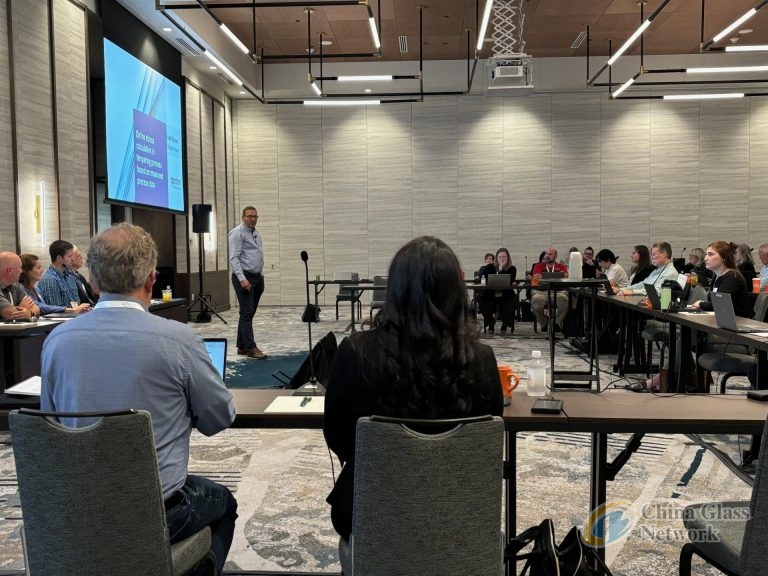Post Time:Aug 11,2024Classify:Industry NewsView:1308
The Glass Conference in Milwaukee has concluded after three days of sessions. The conference was sponsored by the National Glass Association. It offered various meetings centering on code updates, glass recycling and vacuum-insulating glass, along with discussions on glass tempering stress modeling and net-zero schools.

Day one ended with building code updates from energy codes consultant Tom Culp of Birch Point Consulting. You can find the full recap of day one here.
Energy Codes & Standards Update
Culp provided updates on energy codes and standards, saying that the 2024 IECC is complete. He says there are no changes to window area limits but small changes in the commercial and residential fenestration U-factor. For example, zone four and five went from 0.36 to 0.34, while zone three went from 0.42 to 0.38. The IECC does include credits for high-performance windows, increased daylight areas, automated shading and smart glass.
Many electrification materials were optional after appeals, but photovoltaic and BIPV were unaffected.
For ASHRAE 90.1, Culp says there have been comprehensive changes to fixed and operable windows, skylights and sloped glazing. Glazed entrance doors have not been changed.
Fabricating Committee Notes
Day two of the conference opened with discussions from fabricating committee members, including a presentation on glass tempering stress modeling by Antti Aronen, Glaston’s tempering process development manager.
According to Aronen, glass tempering stress modeling has been used for years to develop new products and design processes for different products. However, Glaston has developed modeling that can now be used to measure process data to calculate the stress level in the glass after heat treatments. Several glass companies are currently using and testing the system. It can be installed on new systems and retrofitted on current systems.
Aronen says the stress level after tempering depends on glass thickness, material properties, glass temperature after heating and before cooling, and the cooling system’s dimensions.
The testing is currently the only way to get value for stress for each glass straight after tempering and heat strengthening with good accuracy without manual measurements.
Several factors impact the system’s accuracy, including the accuracy of the thermal scanner measurement, the uniformity of the glass temperature, the accuracy of the heat transfer coefficient calculation model and the accuracy of the thermal and mechanical model. Conference attendees also stressed the importance of cleaning thermal scanners, which are not properly maintained throughout the glass industry. While accepting the automated modeling, some attendees expressed skepticism, favoring the time-tested process of breaking glass.
Glaston’s system is just as accurate as the SCALP process and takes far less time to get results. Additionally, stress calculation gives only one value for each glass, while SCALP is usually used in several locations.
Building Net Zero Schools
The conference’s final day began with a discussion on net-zero schools. Len Sciarra of FARR Architects detailed the best types of fenestration and window orientation to help schools achieve net zero and how to balance sustainability with life safety and material transparency.
Sciarra focused on the 70,000-square-foot Academy for Global Citizenship charter school in Chicago. The school is the Midwest’s inaugural Living Building Challenge design and PHIUS certified school. It features four types of glazing: curtainwall, punched (thin triple), translucent and skylights (25% window-to-wall ratio). It also boasts various sustainable applications, including occupancy sensors, a heat recovery chiller, a photovoltaic array for net-zero energy and stormwater harvesting.
Sciarra says several challenges were obtaining environmental product declarations from companies and requesting chemical compositions so the building could become a Living Building Challenge compliant.
One requirement is that projects must not contain certain red-list chemicals, including PVC and formaldehyde. However, Sciarra says that some glass companies involved with the project were reluctant to divulge their product’s “secret sauce.” The trick, says Sciarra, is that companies need to say what’s not in the product, not what’s in it.
Sciarra adds that, in hindsight, the designers should have added bird-friendly glass. During last year’s migration season, numerous birds collided with the building. He says they plan to go back and add bird-friendly film.
More than 60 attendees participated in the event.
Source: usglassmagAuthor: shangyi
PrevNippon Electric Glass: VPPA for Solar Power Signed in Malaysia
US glass recycler breaks ground on Louisiana glass recycling plantNext